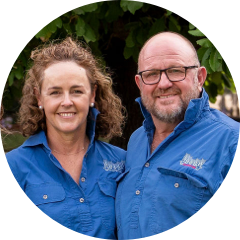Management strategies for improved productivity and reduced nitrous oxide emissions
This project was completed in 2017.
Project Officer
Dr Cassandra Schefe
WHY THIS PROJECT WAS NEEDED
The minimisation of nitrous oxide (N2O) emissions is a “win-win” for both farmers and the environment, saving the grower dollars in unnecessary fertiliser expenditure, whilst preventing emissions of an important greenhouse gas.
Nitrous oxide is a greenhouse gas which has 300 times the warming potential of carbon dioxide. Nitrous oxide (N2O) emissions result from the presence of high levels of soil nitrates that are denitrified under waterlogged conditions.
By adopting simple measures, such as measuring soil mineral nitrogen and soil carbon, grain growers can better match the need for nitrogen fertiliser application to crop demand, reducing the risk of gaseous losses that are damaging to the environment, and farm profits.
In short: The project trialed on-farm practices to reduce agricultural greenhouse gas emissions. Key focus’ included the variability of N2O emissions in cropping systems, tactical nitrogen applications, the impact of soil moisture on nitrogen losses and synchronising nitrogen supply with crop demand.
The same soil conditions that cause elevated nitrous oxide (N2O) emissions also result in the loss of dinitrogen gas (N 2) from the soil. Dinitrogen gas, whilst not a greenhouse gas, represents a potential loss of plant available nitrogen greater than nitrous oxide. During denitrification, losses of dinitrogen gas represent a far greater loss of nitrogen from the soil than nitrous oxide (up to 80 times greater when the soil is waterlogged, but typically 20-30 times greater).
Project focus
The project aimed to trial, measure and demonstrate on farm practices and technologies to reduce agricultural greenhouse gas emissions. A summary of key results from this project was prepared by Michael Straight, FAR Australia:
- N2O emissions from Australian grain cropping are highly variable due to large variations in soil, climate, and management practices.
- N2O emissions from dryland cropping are particularly low compared with other grain systems in Australia.
- To optimise N efficiency and reduce N2O losses, we need a good understanding of soil nitrogen in the system, and therefore try to synchronise nitrogen supply with peak crop nitrogen demand to encourage greater fertiliser uptake.
- Nitrogen loss through N2O emissions is highly dependent on seasonal variability and the soil moisture content at times of fertiliser application.
- The use of tactical nitrogen applications with the aid of a GreenSeeker, allowed residual nitrogen from previous crops to be better identified. This allowed reduced fertiliser application without compromising yield.
- Delaying nitrogen applications maintained grain yield but allowed farmers to make in-season decisions around nitrogen application as the season progresses. This allowed more accurate forecasting of when crop demand for nitrogen is higher (i.e during stem elongation).
- In a wet season, nitrogen losses will generally be higher. In this case, the application of early nitrogen assisted to maintain the crop through wet periods and may be the best strategy in terms of grain yield and quality, but may also result in elevated N2O losses.
Project outcomes
Read the detailed final report for this project, produced by FAR Australia. Read the report produced for Research for the Riverine Plains, 2017.
Spring Field Day
The Spring Field Day, held on 13th September, 2016, was the inaugural event at the Riverine Research Centre (RRC), which is a collaboration between Riverine Plains and FAR Australia.
The RRC was host to a trial investigating nitrous oxide emissions, a potent greenhouse gas, in cropping systems, which was funded by the Australian Government Department of Agriculture, as part of it’s Action on the Ground Program.
In introducing the project, Dr Clemens Scheer (Queensland University of Technology) spoke on nitrogen losses from grain farming systems. He explained that in some soils, a significant proportion of applied nitrogen fertiliser can be lost to the atmosphere as nitrous oxide and that soils prone to waterlogging may be more susceptible to high nitrous oxide emissions.
Under saturated soil conditions, more nitrogen is lost as gas, which reduces the efficiency with which applied nitrogen is used by the plant. To reduce nitrogen losses, growers should apply nitrogen only when the plant is able to take it up (ie not under stress).

Nick Poole (FAR Australia) then facilitated a discussion on the optimal timing of nitrogen fertiliser to reduce nitrous oxide emissions. If crops are given large amounts of nitrogen upfront, then a high proportion of that nitrogen (up to 80-90% in extreme cases) may be lost. The best approach is therefore to apply some nitrogen upfront, with the remainder applied as small amounts throughout the season as trafficability, time constraints and other practicalities allow. This allows for good early crop establishment, meets the needs of the growing plants and allows farmers to tailor nitrogen applications in response to the season.
Find out more
For further information. please email info@riverineplains.org.au
Project investment
Partners
Focus areas
MORE ON Grains & Sustainability
Our research enhances food production, increases environmental resilience and improves community connection across the Riverine Plains. See how our research creates impact.
-
Grains
Business
-
Sustainability
Drought
-
Sustainability
-
Grains
Sustainability
-
Grains
-
Grains
-
Soils
Grains
-
Soils
Sustainability
-
Grains
Soils
-
Drought
Grains
-
Soils
Grains
-
Grains
-
Grains
Soils
-
Soils
Grains
-
Fodder
Grains
-
Grains
-
Soils
Sustainability
-
Grains
-
Soils
Sustainability
-
Grains
Soils
-
Sustainability
Grains
-
Grains
Sustainability
-
Soils
Grains
-
Livestock
Grains
-
Grains
Soils
JOIN RIVERINE PLAINS
Riverine Plains provides opportunities to see new research and innovation, connect with rural communities, and attend informative events.


